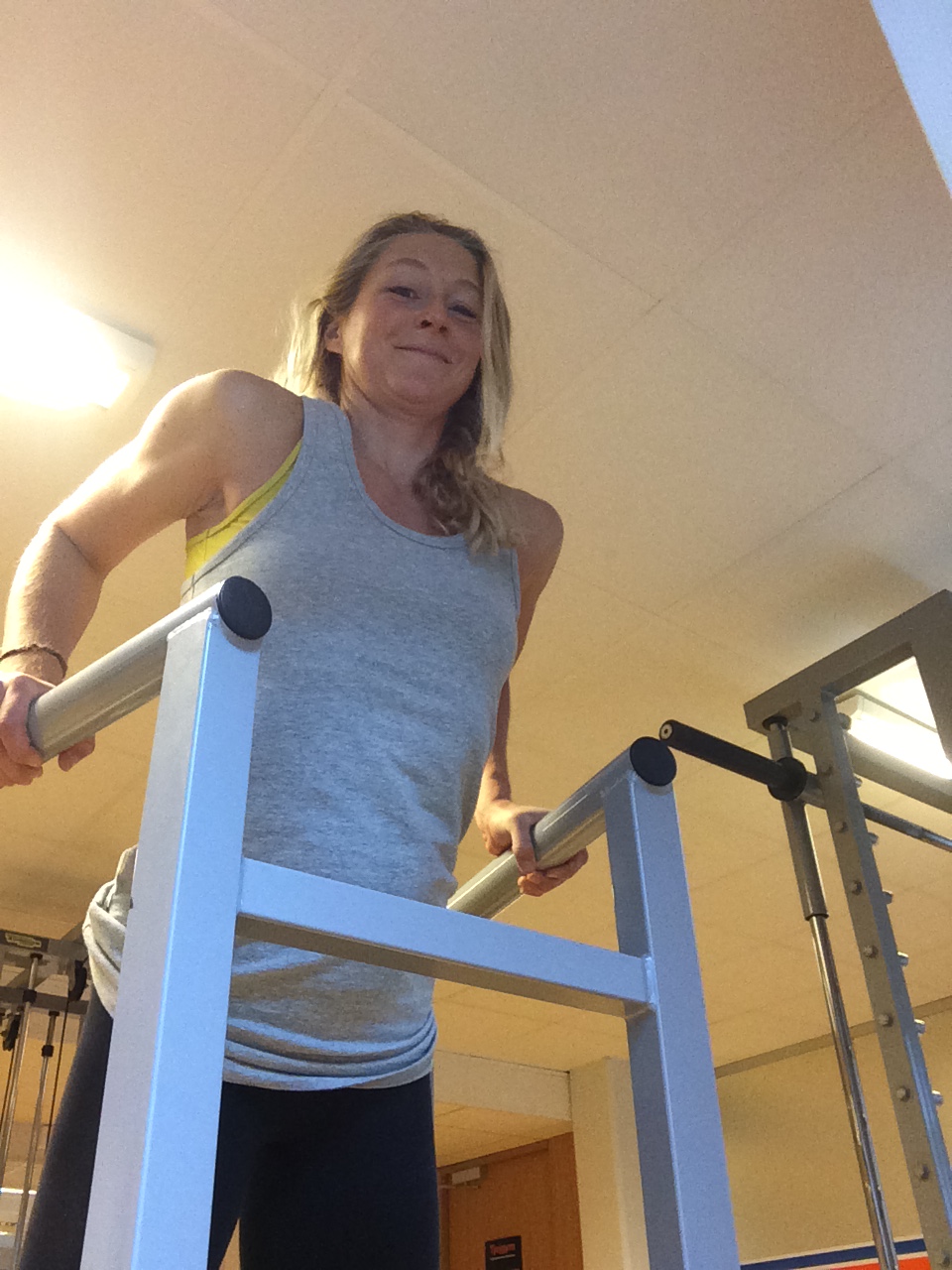
Kvinnor klarar att spänna musklerna under längre tid än män – detta är en av slutsatserna idrottsforskaren Sandra Hunter dragit efter många års studier av män och kvinnors olika reaktion på träning.
Män har i genomsnitt mer muskelmassa, mer hemoglobin i blodet samt större hjärta och lungor – och därmed högre syresättning av musklerna. Därför presterar de i regel bättre än kvinnor när det gäller fysiska utmaningar. Men det finns undantag.
Kvinnor klarar bl.a. av att hålla en statisk kontraktion betydligt längre än män. Kvinnor är dubbelt (!) så uthålliga som män. Statisk kontraktion innebär att hålla en muskel spänd i samma läge under en tid.
I Hunters studie skulle man hålla armmuskeln spänd till 20 procent av sin förmåga så länge som möjligt. Kvinnorna klarade i genomsnitt 30 minuter medan männen klarade 14 minuter…
Detta beror på att mäns och kvinnors muskler ser lite olika ut. Båda könen har både långsamma muskelfibrer som är uthålliga, och tjocka mer explosiva fibrer som ger kraft. Men de explosiva är grövre hos män. Dessutom är mäns muskler större och det gör att syretillgången snabbare minskar hos dem, när blodtillförseln skärs och muskeln spänns under lång tid.
Sandra Hunter och hennes medarbetare har publicerat en rad forskningsartiklar, där de i detalj undersökt liknande könsskillnader. De har bland annat också sett att kvinnor återhämtar sig snabbare efter en fysisk utmaning.
Eftersom mycket av den forskning som gjorts hittills bygger på mäns prestationer riskerar vi att dra slutsatser som bara gäller det ena könet. När forskare talar om hur en muskel fungerar menar de vanligtvis hur en muskel hos en man fungerar. Vi måste studera båda könen. Inte för att alla ska bli toppidrottare, utan för att belastningsskador och liknande kan se olika ut hos kvinnor och män. Kanske är till exempel vissa av de övningar vi idag ordinerar som sjukgymnastik inte optimalt anpassade för kvinnors förutsättningar.
Ur studien:
Women are capable of longer endurance times compared with men for contractions performed at low to moderate intensities. The purpose of the study was 1) to determine the relation between the absolute target force and endurance time for a submaximal isometric contraction and 2) to compare the pressor response and muscle activation patterns of men [26.3 ± 1.1 (SE) yr] and women (27.5 ± 2.3 yr) during a fatiguing contraction performed with the elbow flexor muscles. Maximal voluntary contraction (MVC) force was greater for men (393 ± 23 vs. 177 ± 7 N), which meant that the average target force (20% of MVC) was greater for men (79.7 ± 6.5 vs. 36.7 ± 2.0 N). The endurance time for the fatiguing contractions was 118% longer for women (1,806 ± 239 vs. 829 ± 94 s). The average of the rectified electromyogram (%MVC) for the elbow flexor muscles at exhaustion was similar for men (31 ± 2%) and women (30 ± 2%). In contrast, the heart rate and mean arterial pressure (MAP) were less at exhaustion for women (94 ± 6 vs. 111 ± 7 beats/min and 121 ± 5 vs. 150 ± 6 mmHg, respectively). The target force and change in MAP during the fatiguing contraction were exponentially related to endurance time (r2 = 0.68 andr2 = 0.64, respectively), whereas the change in MAP was linearly related to target force (r2 = 0.51). The difference in fatigability of men and women when performing a submaximal contraction was related to the absolute contraction intensity and was limited by mechanisms that were distal to the activation of muscle.
women are capable of longer endurance times compared with men when performing isometric contractions at low to moderate intensities. This sex difference has been observed in several muscle groups, including adductor pollicis (5, 13), elbow flexors (19,37), extrinsic finger flexors (32, 48), and knee extensors (27). The mechanism for this difference in endurance time is unknown. A common explanation has been that men, who are usually stronger, sustain greater absolute forces when the target force is based on an individual’s strength (3, 28; cf. 13). Indirect evidence suggests that greater absolute forces are associated with increased intramuscular pressures, occlusion of blood flow, accumulation of metabolites, heightened metaboreflex responses, and impairment of oxygen delivery to the muscle (1, 25, 36,41). Furthermore, activation of the metaboreflex, as measured by the rate of increase in the mean arterial pressure (MAP) and heart rate (pressor response) (29, 35), is inversely related to endurance time (9, 14, 38-40). Accordingly, women had longer endurance times when performing low-intensity contractions with the knee extensor muscles, but this difference disappeared during high-intensity contractions when both men and women would experience circulatory occlusion (27).
The endurance times of submaximal contractions that involve multiple muscles, however, could also be influenced by variation in the pattern of muscle activation (10, 24, 44, 45), perhaps including differences between men and women (42, 43). These observations raised the question of the relative contributions of the target force, circulatory limitations, and pattern of muscle activation to the observed sex difference in endurance time of the elbow flexor muscles. The purpose of this study was 1) to determine the relation between the absolute target force and endurance time for a submaximal isometric contraction and 2) to compare the pressor response and muscle activation patterns of men and women during a fatiguing contraction performed with the elbow flexor muscles. We found that the endurance time of women was greater than that for the men and that endurance time was inversely related to the absolute force sustained during the contraction. This difference in endurance time was accompanied by similar increases in electromyogram (EMG) during the fatiguing contraction for the men and women but by a reduced pressor response for the women. Preliminary accounts of these results have been presented in abstract form (11, 17).
https://journals.physiology.org/doi/full/10.1152/jappl.2001.91.6.2686

Lämna ett svar